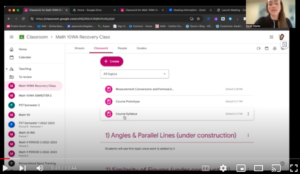The Welcome to Regina course design envisions an alternative mode of delivery of the new immigrant orientation course offered by Regina Open Doors Society. The process was challenging but rewarding. It started as an idea of meeting students’ needs through a new course design, building a course profile identifying a suitable course shell, adopting a design model (pre-determined in this case: ADDIE), developing the course within the model framework, identifying the kind of content to use, accessibility issues and how Artificial Intelligence can contribute to the interactivity and course efficiency, and lastly, invaluable peer feedback. This has been done over three months.
The course is a blended option to the existing in-person classes. The main reason for this is accessibility since new immigrants are often inundated by the different challenges of settling in a new environment. Being able to know about the environment from the comfort of your new home and in a concise course format is a major advantage of this course. Aside from the online interaction through comments, online classes are held on Zoom and the BigBlueButton conferencing tool on Canvas. In addition, there will be a few physical classes to complement the online learning through roleplay and social interactions.
The course is built on Canvas, which has a user-friendly mobile browser and mobile application interphase. The course is set to have 5 modules delivered over four weeks. The first two modules have been developed: Community Resources and Cultural Orientation. While the community resources module is more hands-on since it requires learners to achieve some milestones practically, the cultural orientation module is more interactive and relational. Initially, cultural orientation was the first module but it was flipped because learners will need more time and support to accomplish the tasks (and explore) the city’s resources.
Using the ADDIE model was appropriate because of its streamlined and functional phases. However, a programme planner should not be boxed into a model because models do not plan programmes; people do (Cervero & Wilson, 2006). As such, some of the factors that ADDIE would not have considered such as the socioeconomic and political issues were considered in crafting the course.
Even though this course has been designed without any formal connection to Regina Open Door Society, its structure and usefulness tempt me to approach the relevant authorities to adopt such a course for the ease of newcomers. How about I give you a walkthrough of the course? Be my guest!




